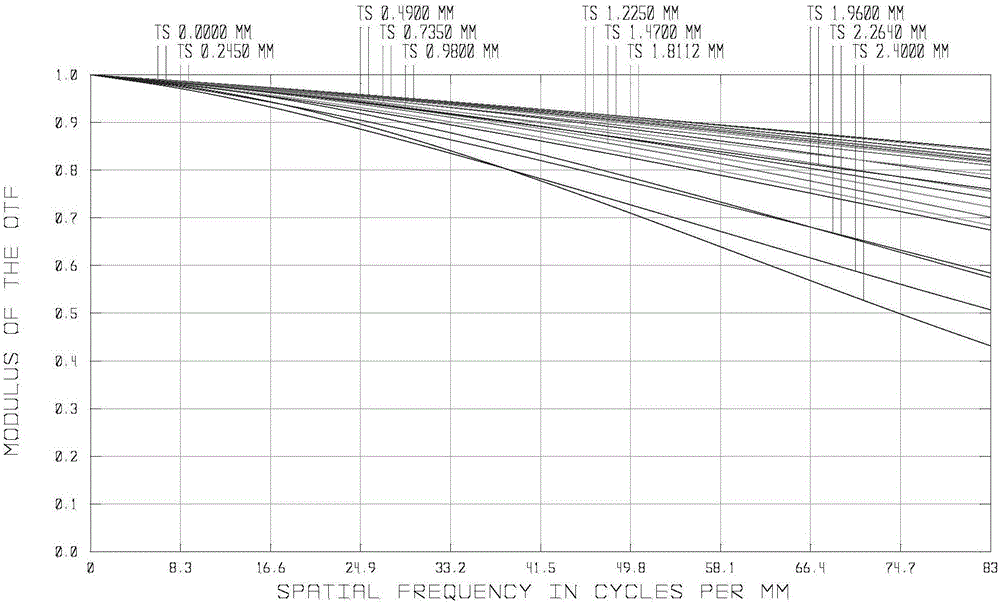a wide angle lens
A wide-angle lens and lens technology, which is applied in the field of wide-angle lenses, can solve the problems of restricting product versatility and wide application, the cost of thermally offset glass lenses, and the lens cannot work normally, and achieve the effect of light weight, low cost and good tolerance
- Summary
- Abstract
- Description
- Claims
- Application Information
AI Technical Summary
Problems solved by technology
Method used
Image
Examples
Embodiment 1
[0049] Please refer to figure 1The schematic diagram of the structure of the wide-angle lens according to Embodiment 1 of the present invention includes: a front group and a rear group in sequence along the light incident direction, the front group includes a first negative lens L1 and a second positive lens L2, and the rear group includes a similar cemented Lens group: the third positive lens L3 and the fourth negative lens L4, specifically: the first negative lens L1 has a first surface S1 convex to the object side and a second surface S2 concave to the image side, and is located at the beginning of the lens;
[0050] The second positive lens L2 has a third surface S3 concave toward the object side and a fourth surface S4 convex toward the image side;
[0051] The third positive lens L3 has a fifth surface S5 convex to the object side and a sixth surface S6 convex to the image side;
[0052] The fourth negative lens L4 has a seventh surface S7 concave toward the object side...
PUM
| Property | Measurement | Unit |
|---|---|---|
| refractive index | aaaaa | aaaaa |
Abstract
Description
Claims
Application Information
 Login to View More
Login to View More - R&D
- Intellectual Property
- Life Sciences
- Materials
- Tech Scout
- Unparalleled Data Quality
- Higher Quality Content
- 60% Fewer Hallucinations
Browse by: Latest US Patents, China's latest patents, Technical Efficacy Thesaurus, Application Domain, Technology Topic, Popular Technical Reports.
© 2025 PatSnap. All rights reserved.Legal|Privacy policy|Modern Slavery Act Transparency Statement|Sitemap|About US| Contact US: help@patsnap.com



